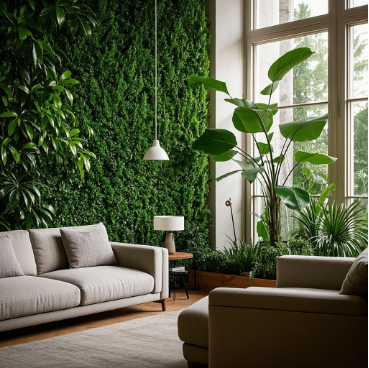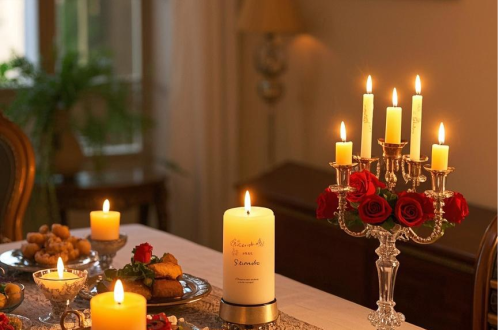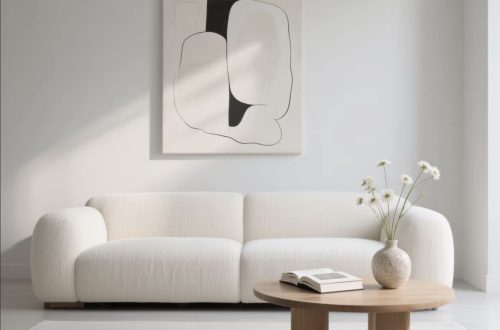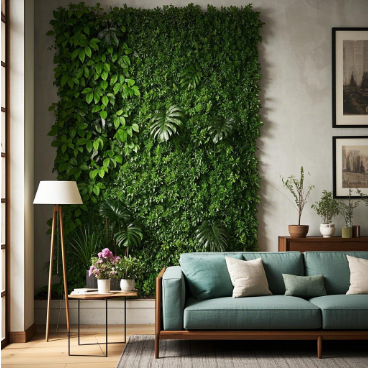
2025 Interior Design Trends and Future Outlook
2025 Interior Design Trends
Resurgence of Oriental Aesthetics
As global cultural exchanges intensify, Oriental aesthetics is set to take center stage in 2025 interior design. Chinese style will no longer rely solely on the stacking of traditional elements. Instead, it will be reimagined through a modern lens. For instance, the borrowed – scenery concept from Chinese gardens might be incorporated into indoor spaces. By artfully installing hollow screens or expansive floor – to – ceiling windows, the outdoor view is seamlessly brought indoors, crafting an ambiance of “dwelling in the city yet feeling like in the mountains and forests.” The Japanese Zen style will also gain traction. Its simplicity in lines, use of natural materials, and tranquil color palettes will create serene spaces. Take, for example, the combination of tatami and wooden grilles to fashion a cozy and relaxing living nook.
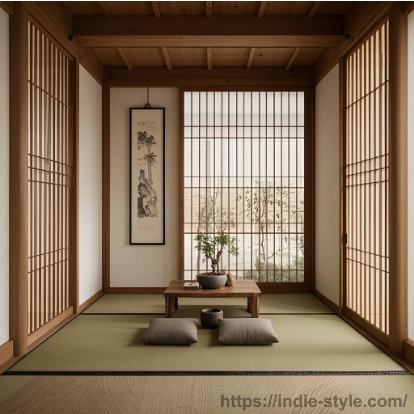
Prevalence of Natural Materials
The trend of returning to nature continues, with natural materials being extensively utilized in interior settings. Wood, with its warm texture and natural grain, adorns spaces from floors to furniture, exuding a warm and inviting atmosphere. Varieties like the sturdy walnut and the fresh white oak infuse spaces with vitality. Stone, too, remains a favorite. The elegant veining of marble, when used on walls and countertops, imparts a touch of luxury, while cultural stones add a rustic and nostalgic charm. Additionally, natural fiber fabrics such as rattan and hemp find their way into curtains, cushions, and rugs, softening the space and offering a natural tactile experience.
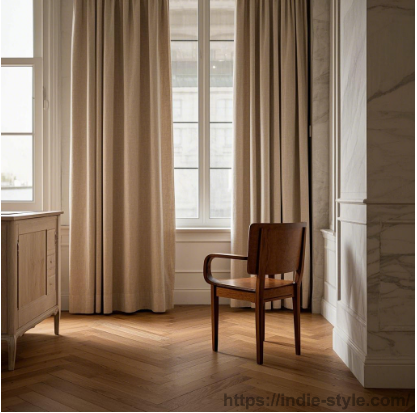
Ascendancy of Food – inspired Colors
In 2025, food – inspired colors will serve as a wellspring of inspiration for interior color schemes. Pantone’s Color of the Year, “Mocha Mousse,” reminiscent of the rich blend of chocolate and smooth cream, sets a warm and mellow tone. This inspires the use of colors like caramel, candied – fruit hues, and champagne in homes. A caramel – colored sofa paired with candied – fruit – colored cushions, for example, can evoke a warm and sweet ambiance. In the kitchen, champagne – colored cabinets can enhance the space’s sophistication.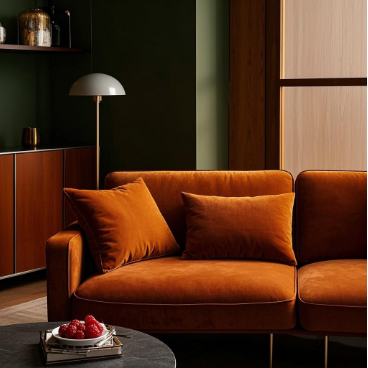
Revival of Mix – and – Match and Maximalism
The younger generation, in pursuit of self – expression, is moving away from minimalism, giving rise to the comeback of maximalism and mix – and – match styles. In these spaces, vintage furniture clashes with contemporary art installations, and patterns from different styles are daringly combined. Think of pop – art – patterned wallpapers paired with Baroque – style carved furniture. Spaces are filled with collectibles, souvenirs, and artworks, creating a “spiritual bazaar” where each item tells a unique story, adding layers of richness and enjoyment to daily life.

Emphasis on Low – carbon, Environmental Protection, and Sustainability
Environmental consciousness is deeply ingrained in interior design. Homeowners are increasingly opting for renewable energy solutions, like solar panels, to power their homes, achieving energy independence. Energy – efficient appliances are also in high demand, with intelligent thermostats that adjust automatically according to indoor and outdoor temperatures, curbing energy consumption. When it comes to materials, recycled – based floors and biodegradable wall paints are chosen for their eco – friendliness without sacrificing aesthetics.

Further Integration of Office and Home
The hybrid work model has become the norm, necessitating home spaces to double up as workplaces. Designers are achieving this integration through flexible layouts and multi – functional furniture. Foldable desks that can be stowed away when not in use free up space, while integrated “work islands” serve multiple functions such as working, dining, and relaxing. Studies are often combined with living rooms, separated by glass sliding doors or screens to maintain an open feel while ensuring privacy.
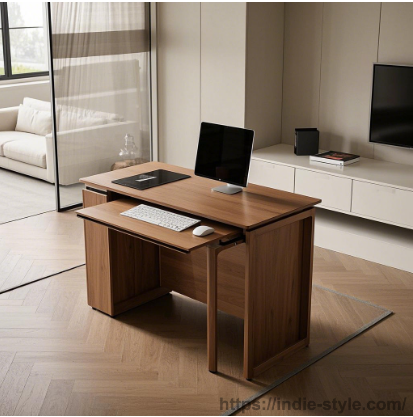
Future Trends in Interior Design
In – depth Integration of Smart Technology
The rapid advancement of Internet of Things (IoT) technology will lead to the widespread adoption of smart home systems. In the future, indoor lighting, temperature control, and curtains will be interconnected, allowing for effortless control via mobile apps or voice commands. For example, in the morning, as the sunlight gradually brightens, smart curtains will open automatically, soft lights will turn on, and soothing background music will play, kick – starting a vibrant day. Moreover, smart furniture will become more intuitive, with features like massage and heating functions in sofas and desks that adjust their height automatically, not only bringing convenience but also inspiring new design ideas.
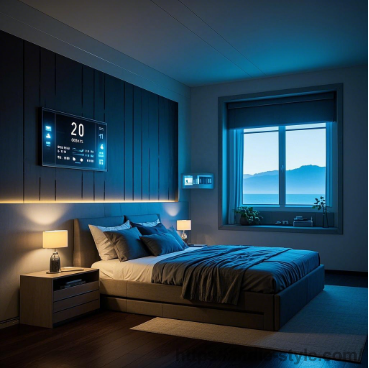
Enhanced Personalization and Customization
Consumers’ desire for uniqueness is on the rise, and future interior design will be highly personalized. Designers will delve into clients’ living habits, hobbies, and cultural backgrounds to create bespoke designs. For a music enthusiast, a music room with professional acoustic design might be crafted, while for a photography buff, a studio with optimal lighting and storage solutions could be designed. Every aspect of the space, from the layout to the smallest details, will reflect the client’s individuality, making the home a true reflection of their personality.
Expansion of Sustainable and Green Design
The commitment to environmental protection will drive designers to increasingly use renewable resources. Bamboo, known for its rapid growth, can be transformed into durable and aesthetically pleasing floors and furniture. Recycled wood will also see greater use, breathing new life into old timber. Design will also focus more on natural ventilation and lighting. By carefully planning the space layout, taking advantage of the building’s orientation and window placement, natural light and air can be harnessed, reducing reliance on artificial lighting and air – conditioning. Rainwater collection systems and water – saving fixtures will become more common, improving water resource management.
Heightened Focus on Well – being – centric Design
Future interior design will place a greater emphasis on the well – being of occupants. Spaces will be designed to engage the senses, with textured walls providing unique tactile experiences and natural sounds like flowing water and birdsong creating a peaceful environment. The role of plants will extend beyond decoration, with an increased focus on their air – purifying and mood – enhancing properties. Indoor gardens and vertical green walls will become more prevalent. Additionally, inclusive design principles will gain momentum, ensuring that homes are accessible and comfortable for people of all ages and physical abilities, with features such as wheelchair – friendly passages and adjustable furniture.
